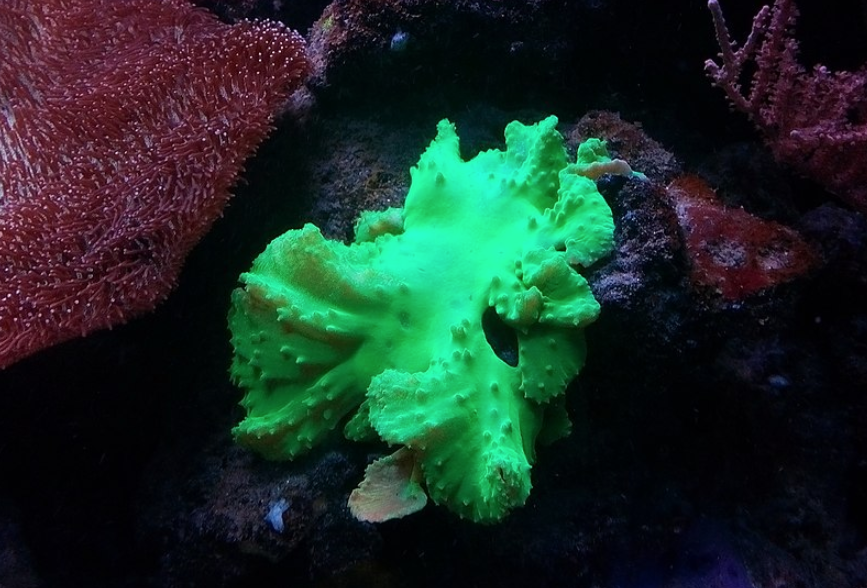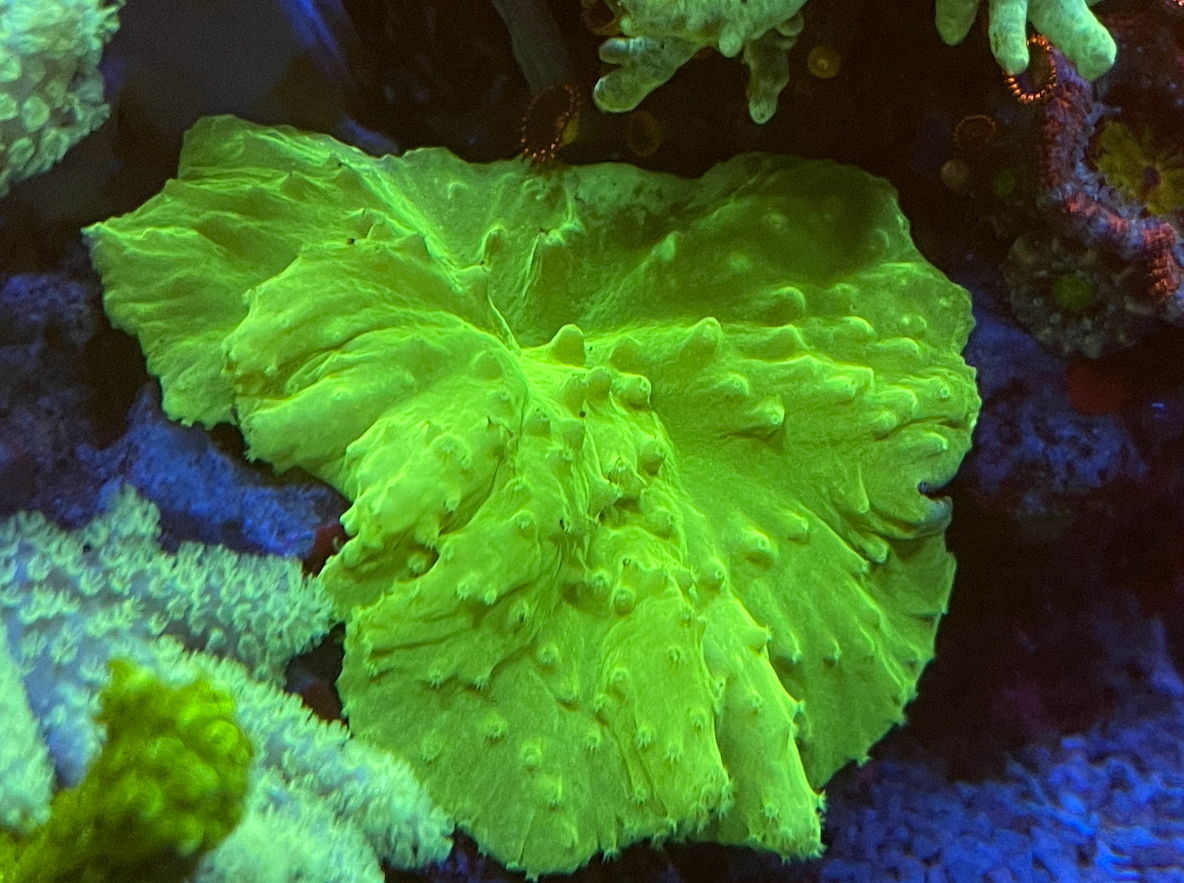If you’re completely new to reef aquariums or have had a bad run of coral deaths, our featured coral, the Cabbage Coral, is a great coral to add to your tank. As the common name suggests this soft coral looks like a leafy vegetable, and its scientific name Sinularia brassica alludes to cabbages too, although it is exported and still sold by many under its synonymized name Sinularia dura.
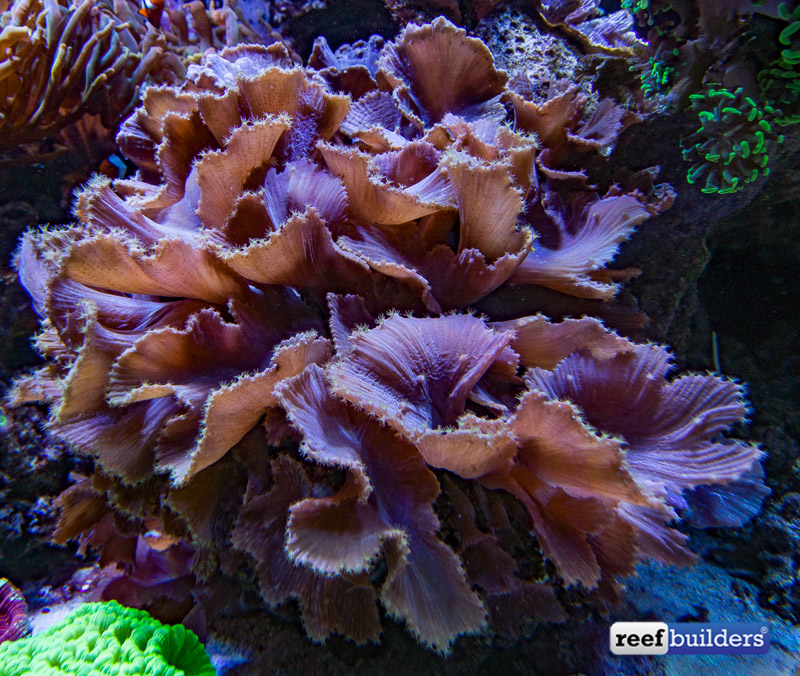
The cabbage coral is a type of leather coral so is often grouped together with other leathers like Toadstools, Sarcophyton spp. and Devil’s Hand Corals, Lobophytum spp. although both Lobophytum and Sinularia have finger-like species within the genera. The good news with leather corals? They’re easy to keep, they’re recommended for complete beginners and experienced aquarists alike, and they’re generally inexpensive too.
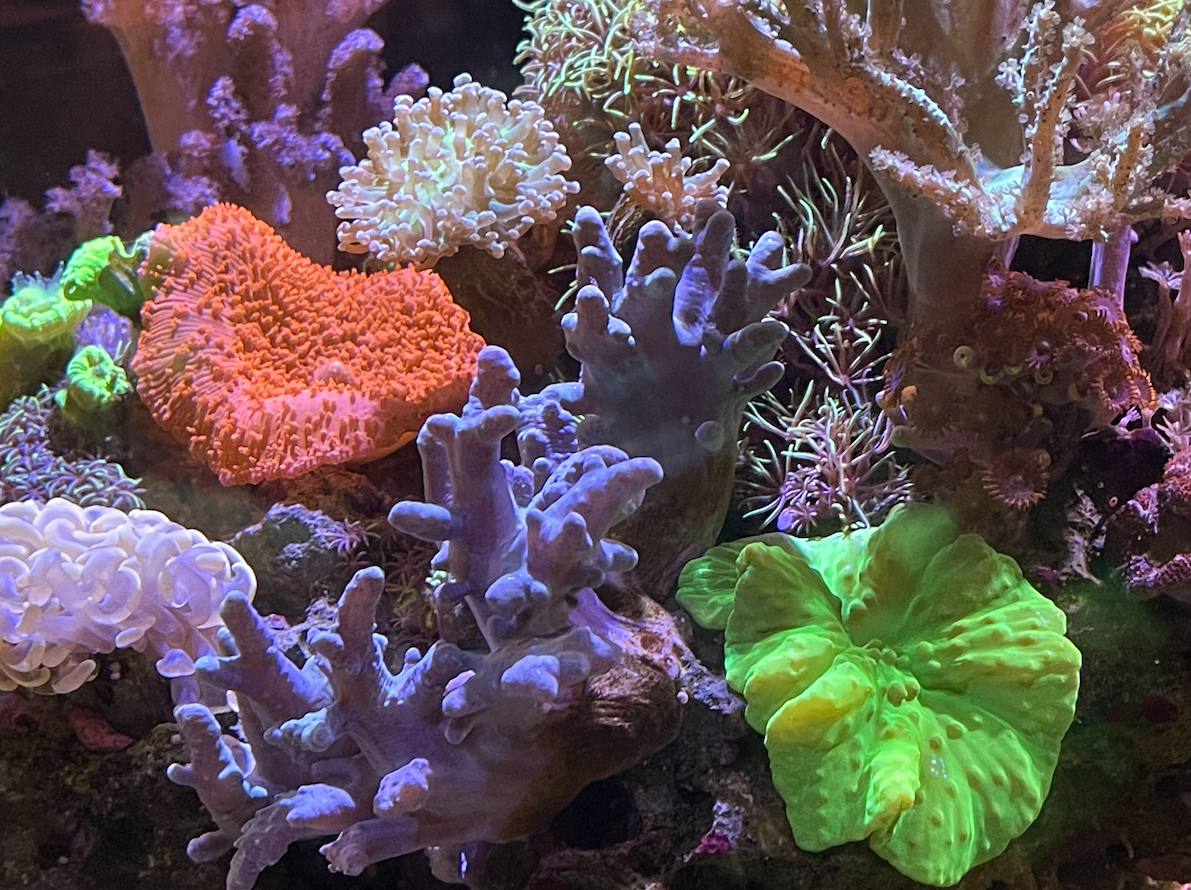
The downside with most leather corals is their beige/brown/gray coloration which fails to pop under blue LED. The Green Cabbage coral however combines extreme hardiness, ease of keeping, relatively low price with that all-important color and pop, and being a soft coral they are easy to propagate and are at low risk of over-collection from the oceans. It’s win, win!
Cabbage Coral Aquarium Care
Cabbage corals are extremely accommodating when it comes to their care in the aquarium. The water should of course be at the right salinity and temperature, with KH, Calcium, and Magnesium all similar to that of the tropical oceans, but they do well under a huge variety of lighting from fluorescent to metal halide to LED, and a variety of flow conditions.
Most are bought with a tiny amount of rock underneath and placed either near the substrate or halfway up the tank. They can tolerate bright light but placement at mid-level or below is better for them, and somewhere where they can receive enough flow to prevent detritus from settling on top of them. Save the top levels of the aquascape for more demanding corals that need to be there.
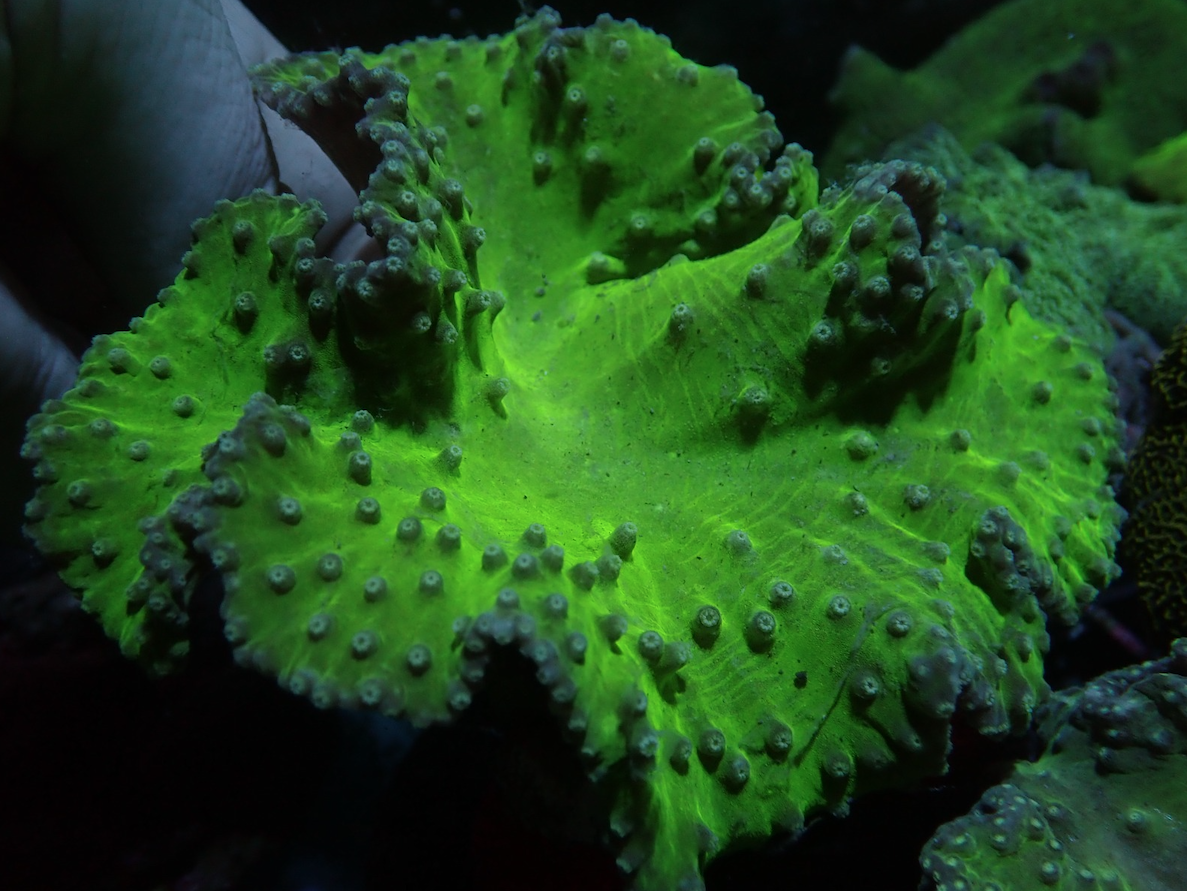
Leather corals are known for producing a mucous that they can use to remove dirt particles from their own flesh, but they need occasional strong flow to blow that mucous off them and away, resulting in a clean coral again. All leathers shrink, pull in, and slime up occasionally and they do this in nature too. If it’s not being stung by a neighboring coral or bitten by a non-reef-safe fish it should reopen in time (which sometimes days or weeks,) and it’s nothing to worry about.
In new tanks, it shouldn’t need any specific coral foods and will get by on light, and the juice from frozen foods. In mature tanks, it should relish the elevated nutrient levels as well as phytoplankton and liquid coral foods, and being a soft coral, the addition of Iodine and Iron will help if those levels bottom out.
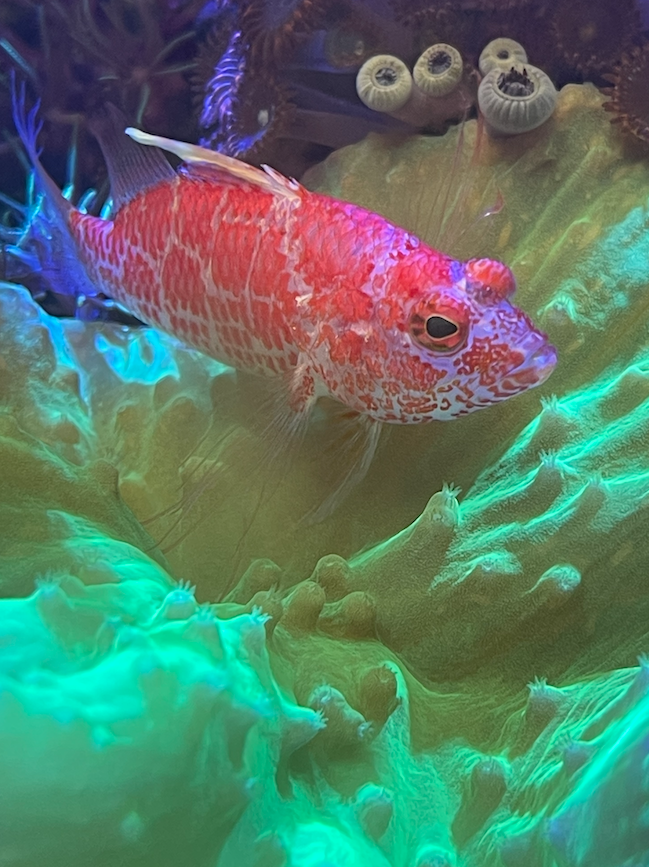
Small, 3” diameter specimens will be fine in nano tanks, but they can be left to grow out for decades in larger, established tanks. They can be mixed with other leathers in a super simple softy tank or mixed with LPS and SPS corals in a mixed reef.
Cabbage Coral availability
Cabbage corals used to only be available in pinkish/brown, but in the past ten years we have seen those with a green sheen, peppermint green, and even fluoro lime green, and the solid greens are the most popular for obvious reasons. If you want to propagate it will just grow and spread over rocks, or just slice it into chunks with a razor blade. It’s a very undemanding, very forgiving coral, and that’s why we love it so much. They are widely available in the saltwater section of all aquarium stores.
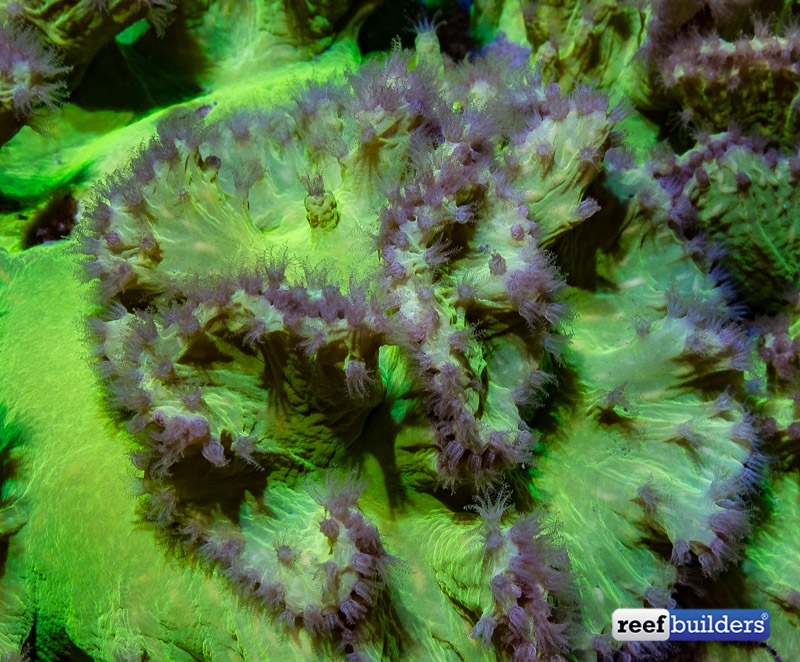
Although we love the challenge of breaking new frontiers, retrying difficult fish and corals, studying, and experimenting, when this undemanding coral just thrives in the background, in all the different situations we put it in, we can’t help but covet and appreciate it all the more. We recommend it!
